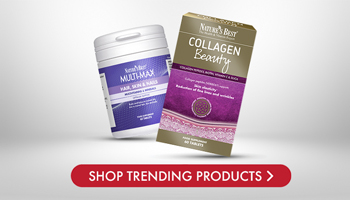
There’s a lot of buzz around antioxidants in the skincare world. And so, it should come as no surprise that astaxanthin – a powerful antioxidant that belongs to the carotenoid family – has received increasing traction from skin experts in recent years.
Not all antioxidants are created equally. And evidence suggests astaxanthin is unparalleled in its antioxidant properties, surpassing other skincare superfoods, including beta-carotene and vitamin E (1). Most notably, astaxanthin is said to be 6,000 times more potent than another antioxidant powerhouse, vitamin C, which can often be found in our bathroom cabinets (2).
Antioxidants are widely touted for fighting free radical damage and oxidative stress, both of which contribute to premature skin ageing, amongst other things.
What is oxidative stress?
Oxidative stress begins with free radicals. Free radicals are unstable molecules that have an uneven number of electrons. The problem is that electrons need to be in pairs. To achieve this and stabilise themselves, free radicals scavenge electrons from other healthy cells. This, in turn, creates more free radicals and leads to a chain reaction.
Free radicals are created as a by-product from cell metabolism or exposure to external sources, like UV rays from the sun, air pollution, or cigarette smoke.
The body’s natural antioxidant defences are a means of keeping free radicals in line. Antioxidants are molecules with an extra electron that can be used to stabilise free radicals. Crucially, antioxidants don’t turn into more free radicals when they donate their surplus electrons.
And yet, sometimes, the body’s natural defences aren’t enough to control free radicals. Oxidative stress occurs when free radicals outnumber antioxidants.
How does oxidative stress affect the skin?
Chronic, unremitting oxidative stress isn’t good for your skin; it’s often implicated in the skin ageing process. Oxidative stress contributes to the loss of elastic fibres and collagen, leading to wrinkles, fine lines, and sagging (3).
The role of antioxidants
Aside from limiting your exposure to free radicals as much as possible – wearing sun cream to protect yourself from harmful UV rays and not smoking, for instance – eating more dietary antioxidants can help manage skin-damaging oxidative stress.
Antioxidants safeguard the inner and outer layers of skin from free radicals and oxidative stress. Amongst the antioxidants known to support skin health, astaxanthin has shown tremendous promise in clinical trials (4).
Dietary sources of astaxanthin
Naturally vibrant red and orange in colour, astaxanthin is pink microalgae that give oily fish and seafood – namely, wild salmon, trout, lobster, krill, and prawns – their distinctive pink hues when they feast on it.
Although you can find astaxanthin in the foods mentioned above, admittedly, it’s hard to obtain enough from your diet alone. Furthermore, you would always have to choose wild and organic fish – not farmed. The deep red hues of wild salmon are attributed to feeding on astaxanthin-rich algae that naturally grows in open waters. Farmed fish, on the other hand, isn’t afforded the same privilege.
To attain relevant levels and include this antioxidant in your diet, it’s always best to take a quality astaxanthin supplement suitable for both vegetarians and vegans.
To learn more about astaxanthin, head back to our dedicated health blog.
References
- Naguib YM. Antioxidant activities of astaxanthin and related carotenoids. (2000) J Agric Food Chem. 48(4): 1150-4.
- Ambati RR, Phang SM, Ravi S, Aswathanarayana RG. (2014) Astaxanthin: sources, extraction, stability, biological activities and its commercial applications--a review. Mar Drugs. 12(1): 128-152.
- Rinnerthaler, M., Bischof, J., Streubel, M. K., Trost, A., & Richter, K. (2015). Oxidative stress in aging human skin. Biomolecules, 5(2), 545–589.
- Chalyk NE, Klochkov VA, Bandaletova TY, Kyle NH, Petyaev IM. (2017) Continuous astaxanthin intake reduces oxidative stress and reverses age-related morphological changes of residual skin surface components in middle-aged volunteers. Nutr Res. 48:40-48.
Related Posts
Disclaimer: The information presented by Nature's Best is for informational purposes only. It is based on scientific studies (human, animal, or in vitro), clinical experience, or traditional usage as cited in each article. The results reported may not necessarily occur in all individuals. Self-treatment is not recommended for life-threatening conditions that require medical treatment under a doctor's care. For many of the conditions discussed, treatment with prescription or over the counter medication is also available. Consult your doctor, practitioner, and/or pharmacist for any health problem and before using any supplements or before making any changes in prescribed medications.

Keri
Keri Filtness has worked in the Nutrition Industry for 19 years. She is regularly called upon for her professional comments on health and nutrition related news. Her opinions have been featured by BBC3, Prima, Vitality, The Mirror, Woman’s Own and Cycling Weekly, amongst others. She has also worked one to one with journalists, analysing their diets and health concerns and recommending changes and additions, where appropriate.



